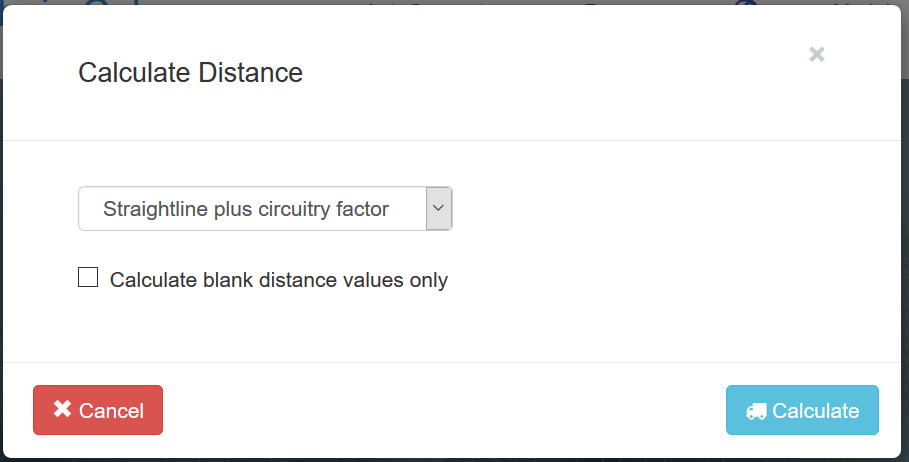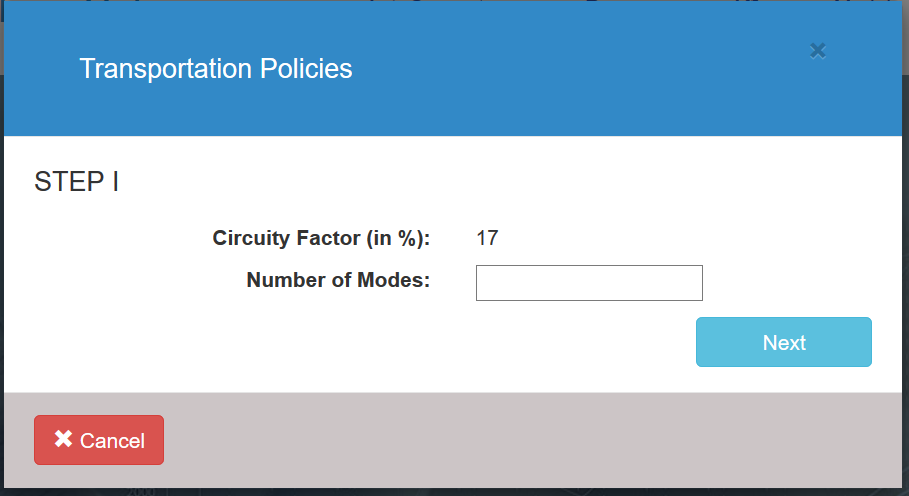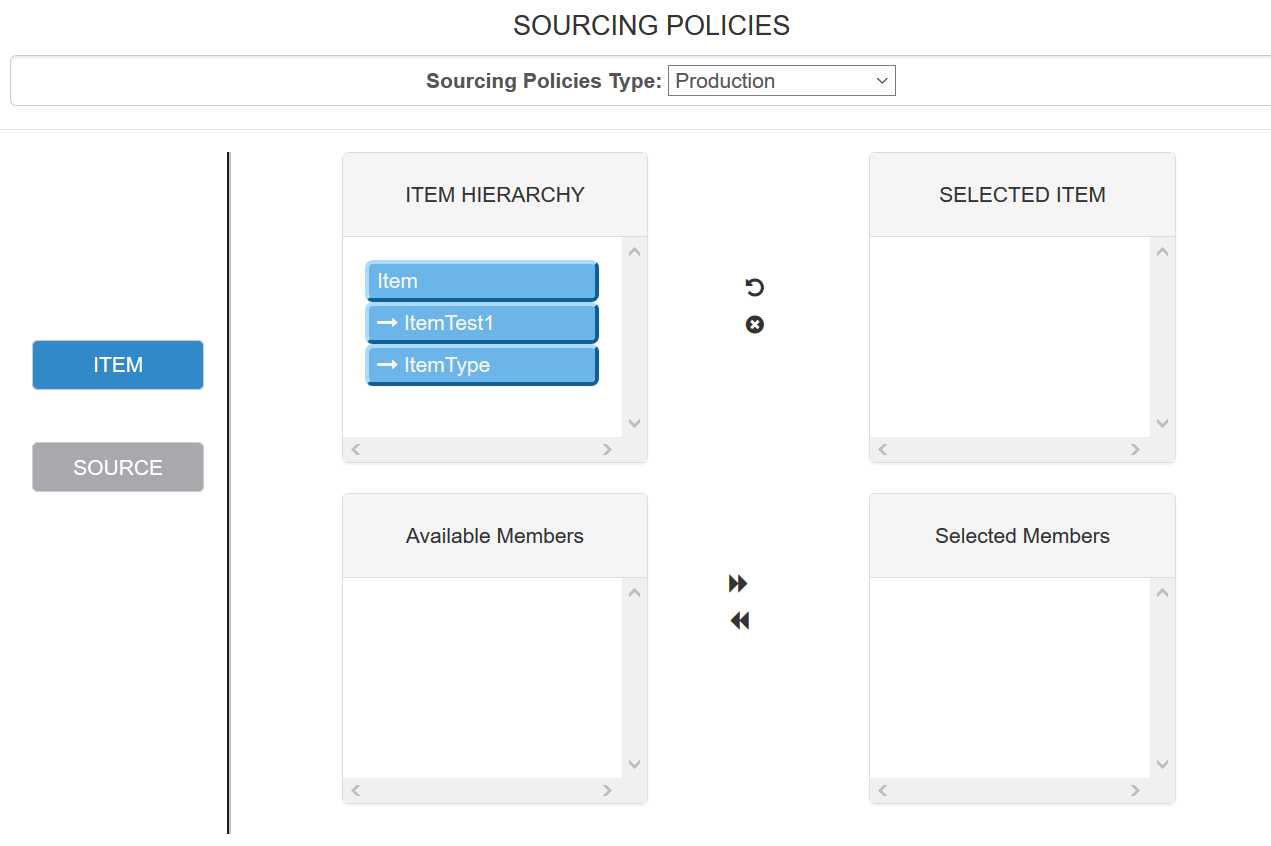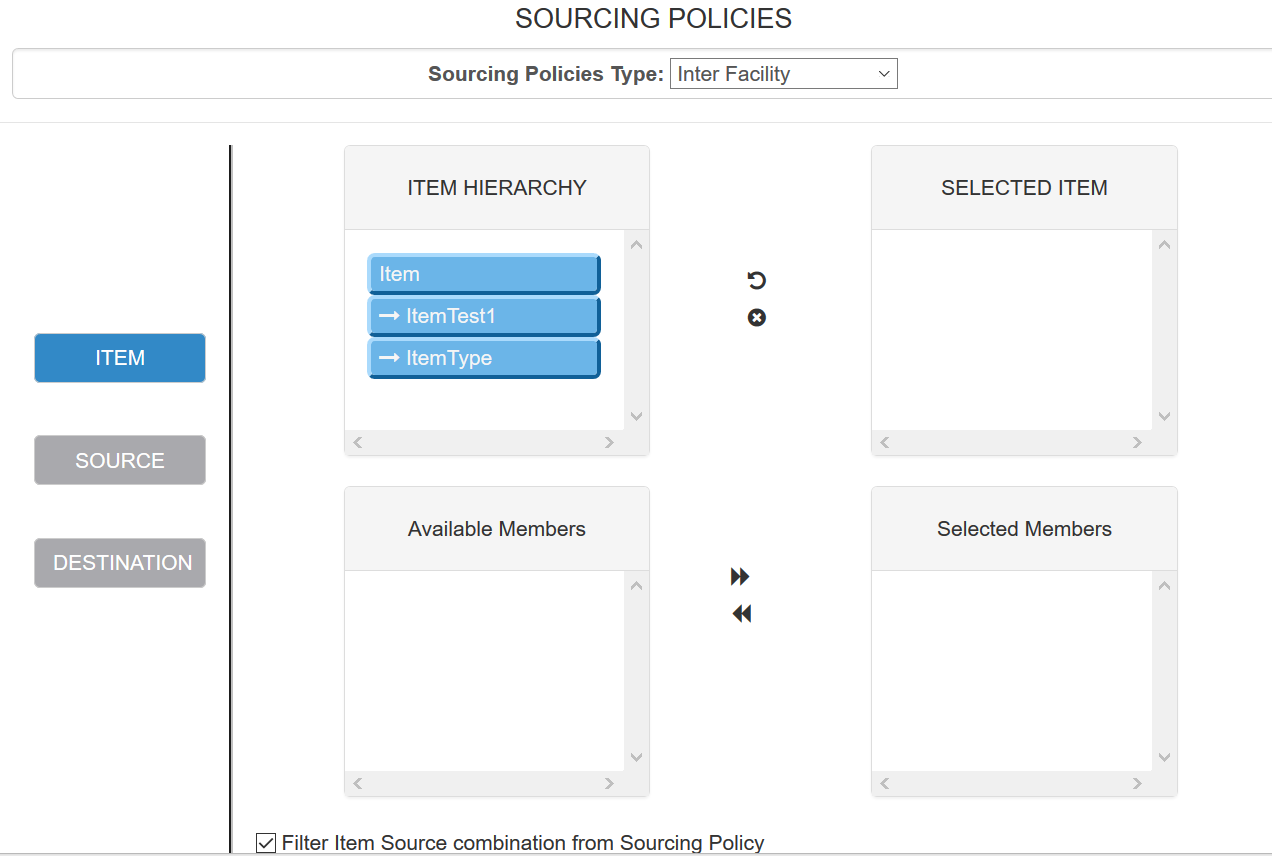Autogenerate¶
To model a supply chain a user needs to provide predefined inputs, however some of these inputs can be autogenerated by the system based on user requirements.
Calculate Distance¶

User may calculate distance for any source destination pair in transportation policies table. User may provide which method to use to calculate distances:
- Straight line plus circuity factor: Here system calculates straight line distance based on haversine formulae and add circuity factor to it. Circuity factor is defined in model setup parameters.
- Google web service: User must provide google API key to use this service, here system sends distance request to google web service and then populate actual distances.
Note
Please ensure all the locations are geocoded properly before using this option.
Groups¶
- Item
- Facility
- Customer
- Mode
- Period
- Name: A unique name which should not be same as of any item/location/period/mode. Also, user cannot use “All” as a group name
- Group Source: User can choose group source as the type of group user wants to create. It can be of 5 types listed above
- Group Members: User can choose group members based on available members pane.

Sourcing Policies¶
User may generate sourcing policies by proving some inputs. Before generating sourcing policies, user must ensure that it has populated item, location and demand table. There are 3 types of sourcing of sourcing policies:
Generate Periods¶
User may generate multiples periods based on model horizon and the intervals required.

Start and End Dates are derived from model setup parameters, user needs to define how it wants to split model horizon (Days/Months/Quarter/Year) and in how may intervals.
Inventory Policies¶
System will populate inventory policies table based on data provided in sourcing policies table. It will extract all unique item source combination and populate the same in inventory policies table. User must ensure that the data is populated in sourcing policies table to use this functionality.
Transportation Policies¶
System will populate transportation policies based on unique source destination pair in sourcing policies table. User may also input number of modes required for each lane and then name those modes.

By default, transportation policies are populated with distance based on haversine formulae and circuity factor.


